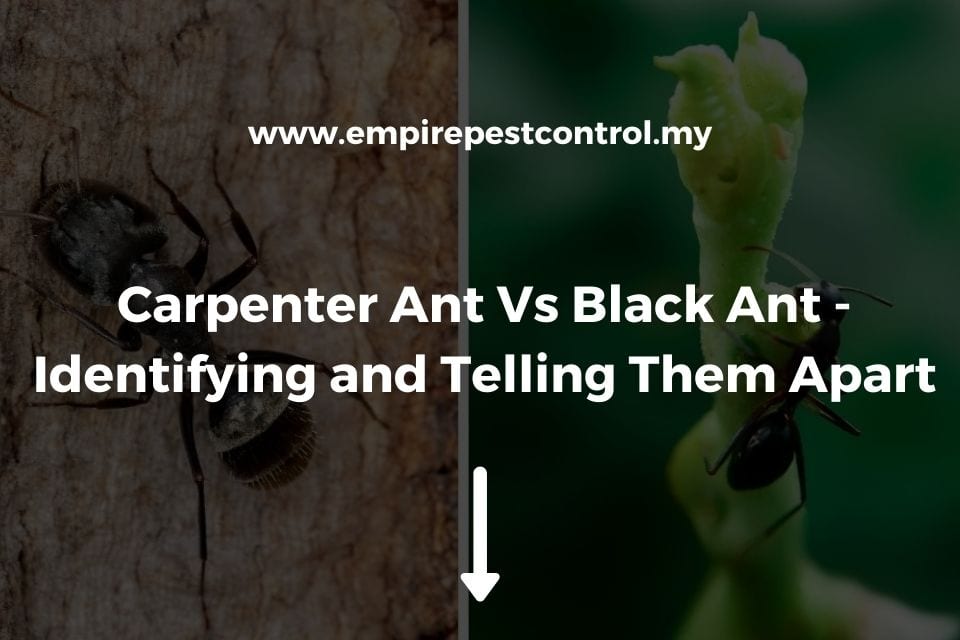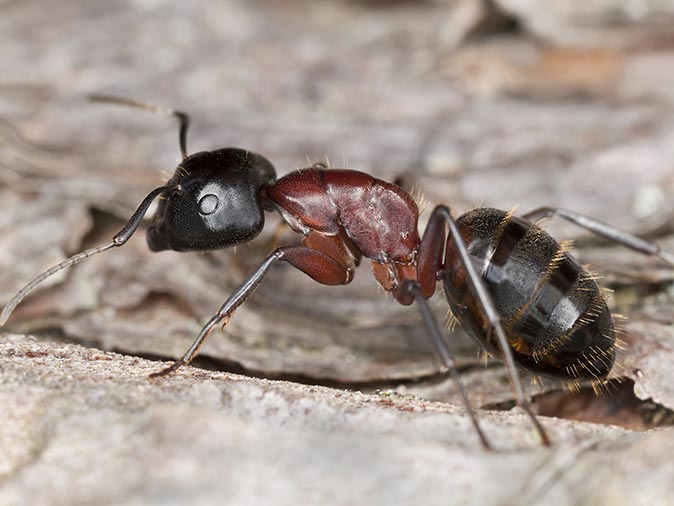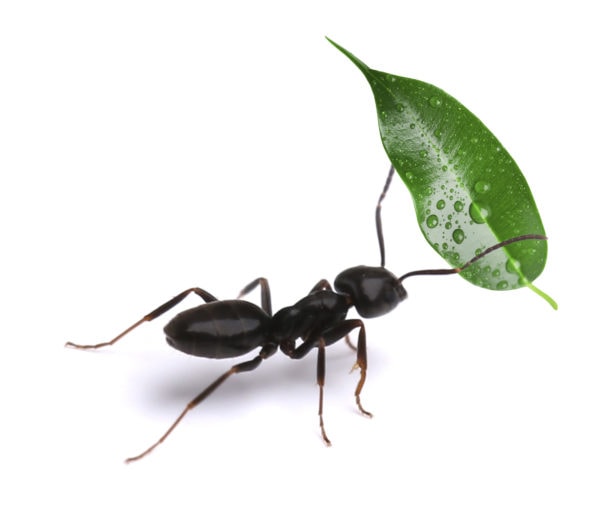Numerous varieties of ants exist, yet the carpenter ant and the black ant stand out as particularly prevalent. To those not well-versed in ant identification, they might seem quite alike, yet there exist multiple methods to distinguish them. This blog entry from an ant control expert will explore the distinctions between black ants and carpenter ants, including tips on how to recognize them.
Contents
Carpenter Ants
Carpenter ants come in a variety of sizes and colors, although they are normally huge (1/4-1/2 inch) and blackish in appearance. From the inside of a residence, swarms of winged carpenter ant reproductives may appear on occasion, but they are not common. Typically in the spring, groups of Carpenter ants are a solid sign that a colony is nesting somewhere inside the structure.
The Behavior and Damage They Cause
Carpenter ants can make their homes in both wet and dry wood, but they prefer wet wood. As a result, water-damaged wood, such as around sinks, bathtubs, inadequately sealed windows/door frames, roof leaks, and improperly flashing chimneys, is more prone to have nests.
Carpenter ants harm wood by hollowing it out to make a home for themselves. They excavate smooth, sandpapered-looking wood corridors that they excavate. Unlike termites, wood that has been attacked by carpenter ants does not contain mud-like material.
The Signs of Infestation
The presence of carpenter ants may be evidenced by their excrement, called frass. It is a sawdust-like material and will be found where the ants are active. You might also see them foraging for food or coming in and out of an opening in the structure.
In addition to looking for the signs of carpenter ants, it is also important to look for the telltale damage that they cause. This damage can often be found around windows and door frames, near leaky areas of roofs and chimneys, and in crawl spaces.
Eliminating Carpenter Ants
If you have a carpenter ant infestation, it is important to call a professional pest controller. They will be able to identify the ants and determine the best way to get rid of them. More so, they will provide tips and advice on how to get rid of carpenter ants from invading your home in the future.
Black Ant
The most common ant species in gardens is the black ant, which is also the only ant that is commonly observed indoors. They can be found all over the country, preferring dry, sandy soil that is not parched or exposed to the elements.
Black ants, like all other Formicine ants, do not sting, and unlike wood ants, they do not spray formic acid, hence they are completely harmless. The major defense of the Black ants is their jaws. However, they aren’t strong enough to break through someone’s skin.
The Problems They Cause
Worker ants that forage for food are a nuisance because they follow well-defined trails and concentrate around food sources. Foods that are sweet are preferred. The earth is too dry in gardens because they excavate around plant roots.
In order to get the sweet honeydew secretions produced by these aphids, they will also raise greenflies, which are pests themselves. They can also be useful as general scavengers and predators of other insects. They’re a sight to behold, and they’re a risk to food that’s intended for human nutrition.
Signs of Them Infesting Your Home
The most common sign of black ants is their nest. A large number of worker ants coming and going from an entrance hole indicates a nest inside the building. The presence of black ants may also be evidenced by their droppings.
It is a sawdust-like material and will be found where the ants are active. You might also see them foraging for food or coming in and out of an opening in the structure.
Dealing With Black Ants
If you have a black ant infestation, the best way to deal with them is by using a chemical insecticide. You can buy these products at your local garden center. Be sure to read and follow the instructions on the product label.
If this method does not work, then it is time to consider hiring professionals. They have the right equipment and knowledge to get the job done right.
Conclusion
We hope you’ve learned a lot from this blog post and are able to identify carpenter ants vs. black ants in your own backyard. If there is anything else about these two types of ant that you want to ask of, please do not hesitate to contact us!



